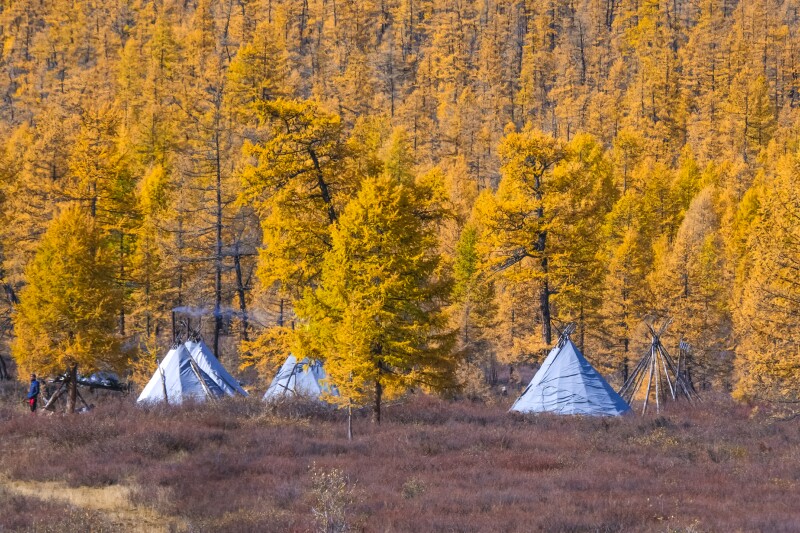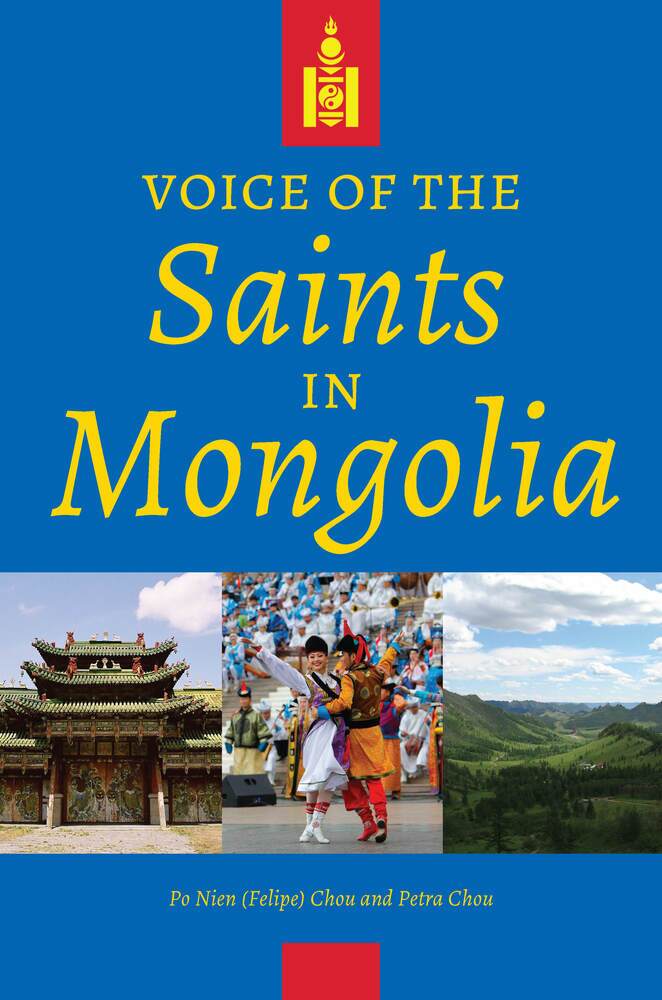Editor’s note: The following excerpt has been adapted from Voice of the Saints in Mongolia, the first comprehensive history of The Church of Jesus Christ of Latter-day Saints in that nation.
Ganbaatar Dunkhig and his wife, Nergui Dorjpalam, were early converts in Darkhan. They were both born in Khuvsgul province and came from families who believed in shamanism. Sister Nergui said her parents were herders and religious:
“We used to believe in shamanism. ... We used to worship nature, mountains and water. ... My grandfather’s younger sister on my father’s side was a shaman, named Itgel Shaman. ... Even though it was during communism, people used to visit shamans and have them perform their shaman ceremonies or prayers in secret when their livestock were dying from zud (... Zud is a natural disaster that causes livestock to die because of severe weather and famine). People would give shamans offerings in return for their service. I used to believe in shamans because it seemed they stopped severe weather and snowstorms and [could turn] the weather warmer during their worship. It also seemed real that they stopped the livestock from dying during zud and made it feel warmer for us during the cold winter. I believed in shamans and used to think that if there was anything good happening to my family, then it was because of the shaman we believed in. We had some hardship and death in our family since it was what life gives us, and one time I even begged the shaman to bring back my grandmother’s spirit to talk to us.”
Ganbaatar’s parents were from a shaman clan that lived in tepees, had a nomadic lifestyle, and were called reindeer people. His parents didn’t believe in shamanism, but he did. Their shaman clan was related to the Native Alaskans, who believe that special natural power and abilities were passed down to their children from one generation to the next. Ganbaatar and Nergui were married in October 1983 and moved to the small village of Enkhtal in 1985, where Ganbaatar worked as a mechanic in the Trans-Mongolian Railway. Then they moved to Darkhan city in 1988 for their daughter to start school. On 17 March 1996, Nergui met the first missionaries in Darkhan, Elders Thompson and Timothy.
“They were the first missionaries who came to Darkhan. They used to meet with my friend, doctor Myadagmaa, who lived on the third floor. They used to come to her home and teach her. First, I thought about them as very nice people, who used to shake my hand every time when we met. Then, I asked my friend why these American people came to her home. She said that they talked about Jesus Christ and told me that I could come to her home if I was interested. So, I went to her home and they were talking about Jesus Christ. I was very interested in knowing more about it. I heard about Jesus Christ even before that, from back in 1993, when my father went to Tarialan sum, Khuvsgul province. He watched a movie about Jesus Christ over there, and when he came home, he told us about him. That is how I learned about Jesus Christ for the first time and I learned that our world has one Lord. That is why I really liked it when I met with them and talked about it. I also felt that these people would never lead me in a wrong direction.”
▶ You may also like: How the Bangkok Thailand Temple’s project manager was inspired to join the Church
Ganbaatar was initially against it, but because the faith of the missionaries was so strong, he felt that they were teaching the truth. He shared the following:
“In the first interview, I felt that the Church was true, and that Joseph Smith restored the Church. I learned to pray from the missionaries. Every time they came, they used to ask me if I prayed about the Book of Mormon and if I felt the Spirit when I prayed about it. We were taking discussions as a family at that time and there were seven of us. The missionaries used to nod their heads when we asked questions from them because they only spoke a little Mongolian. I used to tell them that I didn’t feel the Spirit when I prayed about the Book of Mormon. But one day, I think it was our third discussion, the missionaries came, and we all sat down on the couch. When they started talking, I felt the Spirit very strongly and suddenly I felt this warm and nice feeling about the Church, and I knew then the Church was true. I told the missionaries that I felt the Spirit and that made them so happy and we all hugged each other. What I felt at that time was like a dream. Since that moment, I have felt that the Spirit is with me.”
▶ You may also like: An NYC fashion photographer’s path to true love and the Church
Ganbaatar and Nergui were baptized by Elders Thompson and Timothy on 9 June 1996 in Darkhan. Later that month, Elder Thompson was called as the president of the Darkhan Branch and asked Ganbaatar to be his first counselor in September 1996. On 16 March 1997, Ganbaatar received the Melchizedek Priesthood under the hands of mission president Gary E. Cox and district president Enkhtuvshin Togtokh. Then, on 22 June 1997, Ganbaatar was called as the first Mongolian branch president in Darkhan. When he initially tried to speak in front of people, he got nervous, his knees shook, and his face turned red. But he was later able to speak well and with boldness as he realized he was speaking the word of God. He said, “Now, I can speak the words of God because I am just passing down his words. It is not Ganbaatar speaking, but it is God who is speaking.” Elder John H. Groberg visited Darkhan in July 1998, and following the groundbreaking ceremony for the first Church meetinghouse in Darkhan in July 1999, Ganbaatar represented the Church and monitored the construction of this building.


